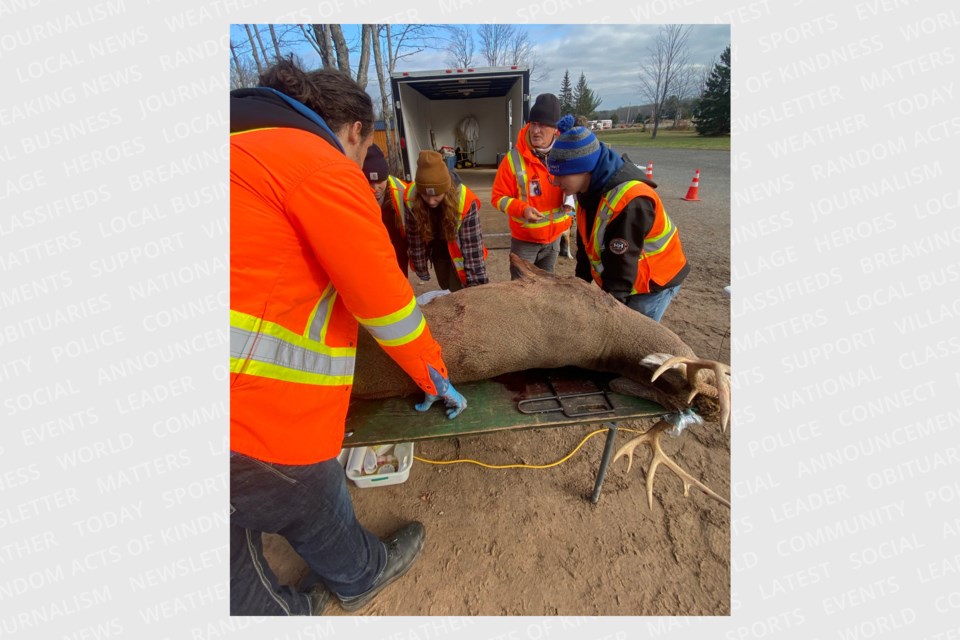It appears that there are plenty of healthy white-tailed deer in this area.
Sault College students in the Fish and Wildlife Conservation Technician, Natural Environment Technician, Natural Resource/Environmental Law and Forestry Technician programs manned two deer check stations - one on St. Joseph Island, one in Echo Bay - for 12 days in November.
The students collected data on deer voluntarily brought in by hunters during hunting season from Nov. 9 to 17.
“The professors decided that annual deer checks would be a good learning opportunity for the students back in the 1990s. It’s a fantastic outdoor classroom," said Greg Cull, a professor in Sault College's Natural Environment Technician program, in an interview with SooToday.
Information collected by the students is valuable to the Ministry of Natural Resources too.
"It’s an opportunity for the ministry to obtain biological data they couldn’t obtain otherwise," Cull said.
Deer hunters are required to report details of their hunt to the ministry, such as whether they shot a buck or a doe, but deer checks provide extra information such as a deer’s weight, age and DNA samples.
There are very few deer check stations across Ontario, Cull said.
“It’s kind of a tradition on St. Joseph Island now. A number of the hunters really look forward to coming into our annual deer check stations.
"We’ll tell them how heavy their deer is, we’ll weigh it for them, we’ll age the deer and tell them how old their deer is. We’ll chat with them about what we’ve been seeing with the deer they bring in, their condition, their health, the status of the herd,” Cull said.
A total of 107 deer were brought to the deer check stations in November.
There were 74 adult bucks, 21 adult does and 12 fawns. Two deer were tied for heaviest buck at 211 pounds, the heaviest doe weighed 141 pounds and the heaviest fawn weighed 72 pounds.
The majority of deer were between one-and-a-half to three-and-a half years of age.
One hundred DNA samples were collected for a Trent University research project.
Cull said he has no major concerns over the deer herds in this area.
No signs of chronic wasting disease were found among the deer, either.
“I think, from what we’ve been seeing, that we have a healthy, robust white-tailed deer herd.”
Data collected by the Sault College students is forwarded to the Ministry of Natural Resources. The MNR sets a quota on how many deer can be harvested.
“You can over-harvest white-tailed deer populations very easily. You can decimate that population easily. Back in the 1970s and 80s we saw a lot of white-tailed deer populations crash as a result of over harvesting,” Cull said.
“What we did in November is really just a sample of what’s going on out there in the deer population, but it’s enough to help biologists with information they wouldn’t be able to get otherwise. It appears this deer population is doing pretty good. We haven’t seen any major decline in the number of deer coming through the check stations.”
